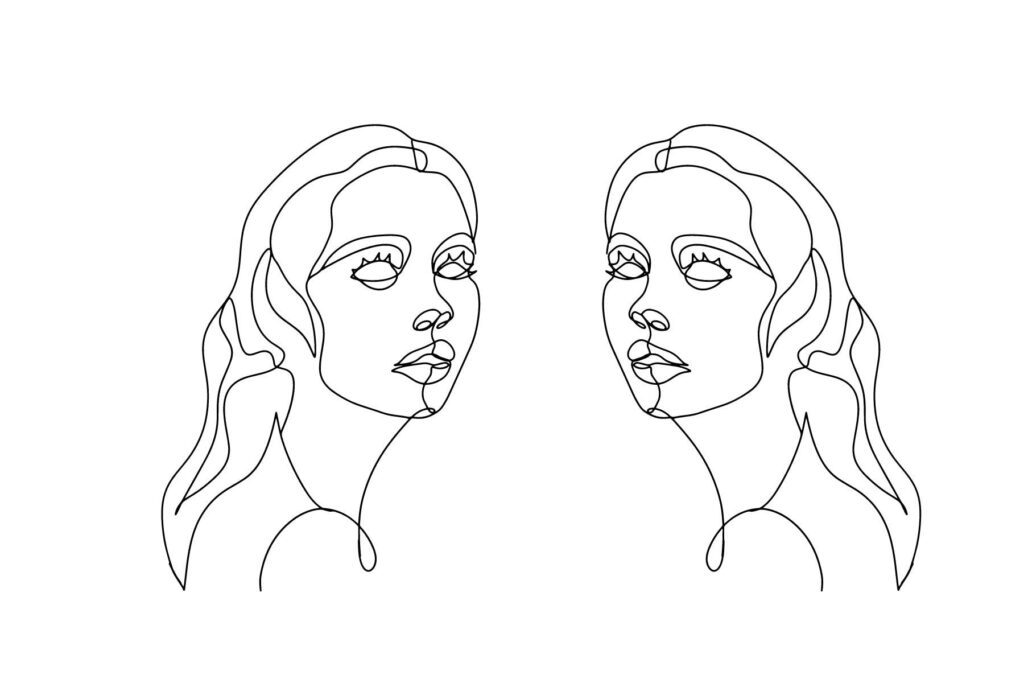Today we will explore the intricate topic of dyslexia.
While not all, most of the insights, findings and ideas we’ll look at today come from the book ‘Reading in the Brain,’ by the renowned French researcher Stanislas Dehaene.
If you want to learn more about this topic, I suggest you check this book out and consider getting a copy!
It’s a true game-changer for understanding dyslexia and reading as a whole.
So, let’s begin!
*Affiliate Disclosure: Some links lead to Amazon marketplace. As an Amazon associate, I earn from qualifying purchases, at no additional cost to you). This helps keep the information on the blog free and available to everyone.
What is Dyslexia? How Can We Define It?
Dyslexia can be defined as an excessive difficulty in learning to read that cannot be attributed to IQ, sensory deficit, or a disadvantaged family background.
Therefore, not all poor readers are dyslexics.
Other factors, such us IQ, poor educational environment, or simply the complexity of spelling rules have to be ruled out.
Only when all these all potential causes have been ruled out can dyslexia be suggested.
Dyslexia is considered a language processing problem. Dyslexia is not a vision, or an IQ problem.
Children with dyslexia do not exhibit consistently lower IQ or higher IQ than their peers.
Its origin is neurobiological, indicating that the underlying issue is located in the brain.
Is Dyslexia a Universal problem?
DYSLEXIA is considered a UNIVERSAL PROBLEM.
However, a perplexing paradox exists. In countries like Italy, with a very transparent alphabetic system – one that is notably regular, with one-letter-to-one-sound correspondences and practically no exceptions-, dyslexia is barely a problem.
Dyslexia rate is approximately 3% in Italy, in stark contrast to the 5 – 17% of children classified dyslexic in the United States.
How can this be? This data alone appears to suggests alternative culprits for these difficulties, and not dyslexia.
For instance, the opacity of the alphabetic code in English, poor teaching methodologies, socio-cultural environment, IQ, etc.
Could dyslexia be just a cultural label coined by Anglo-Saxon medicine?
In the year 2001, the Italian group led by Eraldo Paulesu, from the University of Milan, collaborated with French and English colleagues to investigate this puzzle.
They coordinated one of the most conclusive brain imaging studies, which contributed notably to the way we now look at dyslexia.

The question to confront the study was this:
In all countries, the same proportions of children suffer from a genetic predisposition to dyslexia (we will look at this later on in the video, by the way), but its symptoms only seem to appear in some languages.
Could it be that dyslexia only turned into a pediatric concern in countries whose spelling systems were opaque enough that they put a substantial strain on the brain circuits?
It was, in fact, challenging for the Italian researchers to assemble their group of dyslexics in Italy.
The people they recruited needed to have a history of severe difficulties learning to read; however, their reading skills were notably better than those of English and French dyslexics.
These individuals could read words and pseudo-words aloud, albeit at a slow pace. Besides, when compared to typical Italian readers, their scores differed as significantly as those of groups of French and English dyslexics, when compared to control subjects in their respective countries.
In other words, in English or French, the primary difficulty for dyslexics lies in decoding unfamiliar or unknown words. In languages with a more consistent spelling systems, dyslexia is related to fluency and speed.
With the three groups were in place (English, French and Italian group), the researchers visualized their brain activity using positron emission tomography to look for any commonalities in brain activity when reading.
A comparison between dyslexics and their respective control groups revealed a distinct anomaly. A whole chunk of their left temporal lobe was insufficiently active. Moreover, this reduced brain activity was observed at the same location and to the same degree for all three nationalities.

Paulesu’s findings point to a universal cerebral origin for dyslexia, at least for alphabetic writing systems—the left temporal lobe seems to be systematically disorganized.
This study revealed that different brain areas light up when attempting to read.
Booth and Burman, in 2001, also found that people with dyslexia have less grey matter in the left parietotemporal area than non-dyslexic individuals.
Having less grey matter in this region could lead to problems in the processing of the sound structure of language.
But let’s come back to the “universal cerebral origin for dyslexia.” There seems to be a caveat here.
Dyslexics in China exhibit reduced brain activity in a different region from the one indicated in this study. This might be explained by the fact that the Chinese writing system is ideographic.
An ideograph is a graphic symbol that represents an idea or a concept. Simply put, ideograms are like logos. So, in a way, you could say that in the Chinese language you need to teach children to memorize “logos” and the meaning of each of them.

In any case, studies come to show that there’s something different in dyslexic’s brain activity. Various functional imaging studies have compared the activation patterns of readers with and without dyslexia, revealing significant disparities.
Phonological impairments are predominant in dyslexics who are taught to read an alphabetical writing system, while “graphomotor” dyslexia may prevail in Asian writing systems.
What Causes Dyslexia?
The causes of dyslexia are not widely understood, but there appears to be a genetic component involved. Parents with dyslexia are more likely to have children who also experience dyslexia.
Furthermore, identical twins, who share the same genetic material, exhibit much more tightly correlated reading scores than fraternal twins.
If a child is affected by dyslexia, their siblings have a 50 percent chance of also being dyslexic.
While dyslexia is believed to have a genetic basis, it is not linked to the mutation of a single gene. Rather, a range of risk factors and genes may contribute to its development.

Early dyslexia pioneers, such as Morgan, Hinshelwood, and Orton considered it a visual pathology.
They believed that the dyslexic’s visual system confused letters, but modern research point to an anomaly in the phonological processing of speech sounds.
The majority of dyslexic children appear to suffer from a deficit in the processing of phonemes, which are the elemental units of sounds in words.
In fact, dyslexics often have trouble with phonemic awareness tests.
However, be careful here!
Phonemic awareness is an area where it’s challenging to distinguish causes from consequences.
Do children become poor readers because they struggle with processing phonemes, or is their phonemic awareness impaired because they haven’t yet learned to read?
A study carried out in Finland in 2003 could shed some light on this matter! The study revealed a connection between early phonological abilities and the ease with which literacy will later be acquired.
Most dyslexic children seem to suffer, above all, from a faulty representation of speech sounds.
But do dyslexic children only suffer from deficits affecting the processing of speech sounds? Or do they have more fundamental impairments in auditory perception?
This is a very controversial question, yet a very important one as well, as the identification of dyslexia can be clouded by a complex mixture of related issues, involving visual and auditory challenges.
Although all answers are not known, if interested in digging into this more, I encourage you to read the book “Reading in the brain,” more specifically refer to page 273 of the book.
What is clear is that dyslexia is not due to lack of intelligence. Dyslexia occurs in people of all backgrounds. In fact, many dyslexic people are very intelligent.
As mentioned earlier, brain scans show differences in brain areas that light up when attempting to read.
Besides, dyslexics seem to have more gray matter than non-dyslexics in an area of the brain called the left middle temporal gyrus, while gray matter is less abundant in certain other areas.
Although much has been uncovered about what is going on in the dyslexic brain, we don’t have all the answers yet.
Once again, if you want to explore further into the possible hypotheses regarding why the dyslexic brain presents reduced activation when reading in specific areas, I recommend you check pages #284 to #288 of the book.
Common Misunderstandings Around Dyslexia
Letter Reversals or Writing Backwards Are Symptoms of Dyslexia.
Not necessarily. This is extremely common among all beginning learners, in general.
However, the answer isn’t necessarily dyslexia! It all has to do with a symmetry mechanism that ALL of us have, which allows us recognize faces and objects regardless of their orientation.
For instance, it allows us recognize that these two faces are, in fact, the same person.

The primary area most sensible to this symmetry recognition is of the key regions involved in the process of learning to read.
In other words, we can expect this to be problematic to some degree for ALL children.
Dyslexia is Visual Clumsiness.
The early dyslexia pioneers considered dyslexia as some sort of visual pathology, and this is how many people continue to view it.
That’s not the case.
The root for most people seems to lie in phonological decoding instead, a deficit in the conversion of written symbols into speech sounds.
Dyslexia Only Affects English Speakers.
As we’ve previously mentioned and explained, dyslexia is a UNIVERSAL problem.
In certain countries with very transparent alphabet-based languages, it can go unnoticed though, as dyslexia symptoms present themselves differently.
Children and adults with dyslexia can still read, but not as fluently or quickly as non-dyslexic population.
In English speaking countries, the problem lies in the ability to decode words, especially unknown or unfamiliar words.
People with Dyslexia Can Benefit from Colored Text Lenses.
Colored overlays, one type of tinted filter, are plastic reading sheets tinted with color and placed over text to eliminate or alleviate a wide range of reading difficulties including low reading rate, accuracy, and comprehension.
The idea is that “visual stress” leads to apparent movement and distortion of text, causing headaches and eyestrain while reading, which ultimately interferes with reading ability.
However, there’s no evidence to support that they can improve performance on reading or aid people with dyslexia.
It fact, it’s been labelled as a “neuromyth” in education, and visual stress is not recognized as a disease.
Dyslexia Doesn’t Show Up Until Primary/Elementary School.
Indicators of dyslexia can become noticeable during the preschool years, or even prior to that stage.
This is due to dyslexia’s impact on fundamental language abilities crucial for reading.
Certain red flags that might signal a preschooler’s vulnerability to dyslexia encompass struggles with rhyming and delayed language development.

Dispelling the misconception around this issue is essential, as the sooner symptoms are recognized and addressed, the greater the likelihood of effectively addressing the reading and written language challenges that dyslexic children encounter.
Dyslexic Children Are Neither Dumber nor Smarter Than Non-Dyslexic Children.
Dyslexia has no connection to intelligence, and, therefore, no connection to lower or higher IQ.
How is Dyslexia Diagnosed?
In your child is in the school system, schools may use a RTI (Response to Intervention) system to identify struggling readers and provide them with extra support.
If the student’s learning does not progress enough with supplemental support, and other types of developmental disorders are ruled out, he/she is likely to be identified as dyslexic and quality for special education services.
If your child doesn’t go through this RTI process, an evaluation is needed to diagnose dyslexia.
Testing is normally carried out by an educational psychologist.
However, other medical professionals, such as neurologists, reading specialists or speech pathologists may also be qualified to provide a formal diagnosis of dyslexia.
How is Dyslexia Treated? Can It Be Cured?
With proper help, many people with dyslexia can make significant progress. Dyslexic children can indeed learn to read.
Researchers emphasize the importance of early interventions. Ideally, interventions should be delivered before the negative emotional and motivational consequences of poor reading kick in, and add up to the problem.

Some early signs of dyslexia may include difficulties learning to speak, learning letters and their sounds.
These are red flags that you want to pay attention to. If they persist, consult with a specialist.
However, note that not all students who have difficulties with these skills are dyslexic.
The treatment of dyslexia usually involves long-term, intensive, explicit, systematic instruction in the sound structure of language (that is, phonological and phonemic awareness) as well as phonics.
It’s important to create a personalized roadmap that emphasizes phonics, fluent and faster reading, reading comprehension and writing with the help of a specialist.
There are also some reading programs designed for kids with dyslexia and struggling readers. Many a “multisensory instruction approach”, in conjunction with explicit, systematic, synthetic phonics.
One very popular literacy approach for dyslexic children is the Orton-Gillingham approach to teaching reading.
Final Thoughts
With the right treatment, your child can overcome his/her difficulties. The best results have been achieved using explicit, intense, long-term, phonics-based interventions.
While there’s no miracle cure for dyslexia, literacy intervention can have a very positive impact.
KEY TAKEAWAYS:
- After hours and hours of training, children with scores that were far below their normal age level can reach the lower end of normal distribution.
- The earlier you start using the right type of instruction, the less severe their problems are likely to be in the future.
- It will require more time and effort compared to other children, but even older children with dyslexia can become accurate albeit slow readers.
- Many other supporting activities and tools are available as well, including speech therapy, specific computer training tools, group support, and more.
- It is also important to make aneffort to increase exposure to books and print.
- Children who have overcome dyslexia might not have had as much experience with them for a number of years, so it’s essential to catch up.
To finish up, I would like to leave you with a paragraph from the book “Reading in the Brain”:
“… I would like to emphasize to families with dyslexic children that genetics is not a life sentence. The brain is a ‘plastic’ organ, which constantly changes and rebuilds itself and for which genes and experience share equal importance. Neuronal migration anomalies, when they are present, affect only very small parts of the cortex. The child’s brain contains millions of redundant circuits that can compensate for each other’s deficiencies. Each new learning episode modifies our gene expression patterns and alters our neuronal circuits, thus providing the opportunity to overcome dyslexia and other developmental deficits.
Thanks to advances in the psychology of reading, better reading intervention methods are now being designed… In the last two decades, several leading researchers have designed efficient intervention strategies for dyslexia. Most of these programs aim at increasing phonemic awareness by helping children manipulate letters and sounds.”
Remember, I will also leave you a link to an article on our blog containing all of this information in written form for your future reference.
If you are interested in learning even more about this topic, I highly recommend getting a copy of the book “Reading in the Brain,” by Stanislas Dehaene.
Famous people with dyslexia
Some public figures who have or had dyslexia are:
Richard Branson: Entrepreneur, Investor, Founder of Virgin Group
Keira Knightley: Actress
Robin Williams: Comedian
Steve Jobs: Founder of Apple
Salma Hayek: Actress
Sir Lewis Hamilton: Formula 1 Driver
Whoopi Goldberg: Comedian, Actress
Pablo Picasso: Painter, Artist
Check the entire list here.
References

Hey there! I’m Laura – an author, YouTuber, blogger, and the creator of the “Learning Reading Hub” platform. I created this space to dive into the world of reading instruction and to shout from the rooftops about how vital it is to use the right methods for teaching reading. I’ve got a TEYL certification (Teaching English to Young Learners), plus a Journalism degree from the University of Navarra in Spain, along with a Master’s Degree in Communication.
I’ve always loved digging into research, jotting down my thoughts, connecting with people, and sharing what makes me tick. With a background in marketing, digital projects, and the education scene (especially language learning), I’m all about wearing different hats.
When my first kid needed to learn how to read, it opened my eyes to the challenges and complexities involved. This journey took me through a rollercoaster of self-teaching, eye-opening discoveries, and yeah, some letdowns too. There’s so much conflicting info out there, along with methods that just don’t cut it. And let’s face it, these issues are way too common.
Now, I’m all about channeling that passion (without sounding like a know-it-all!) and sharing my journey. My mission? Making it easier for those who are on the same path I once was.
My heart’s with my family and the amazing Learning Reading Hub project. I live with my husband and two little ones, raising them in a bi-lingual environment (English and Spanish).





